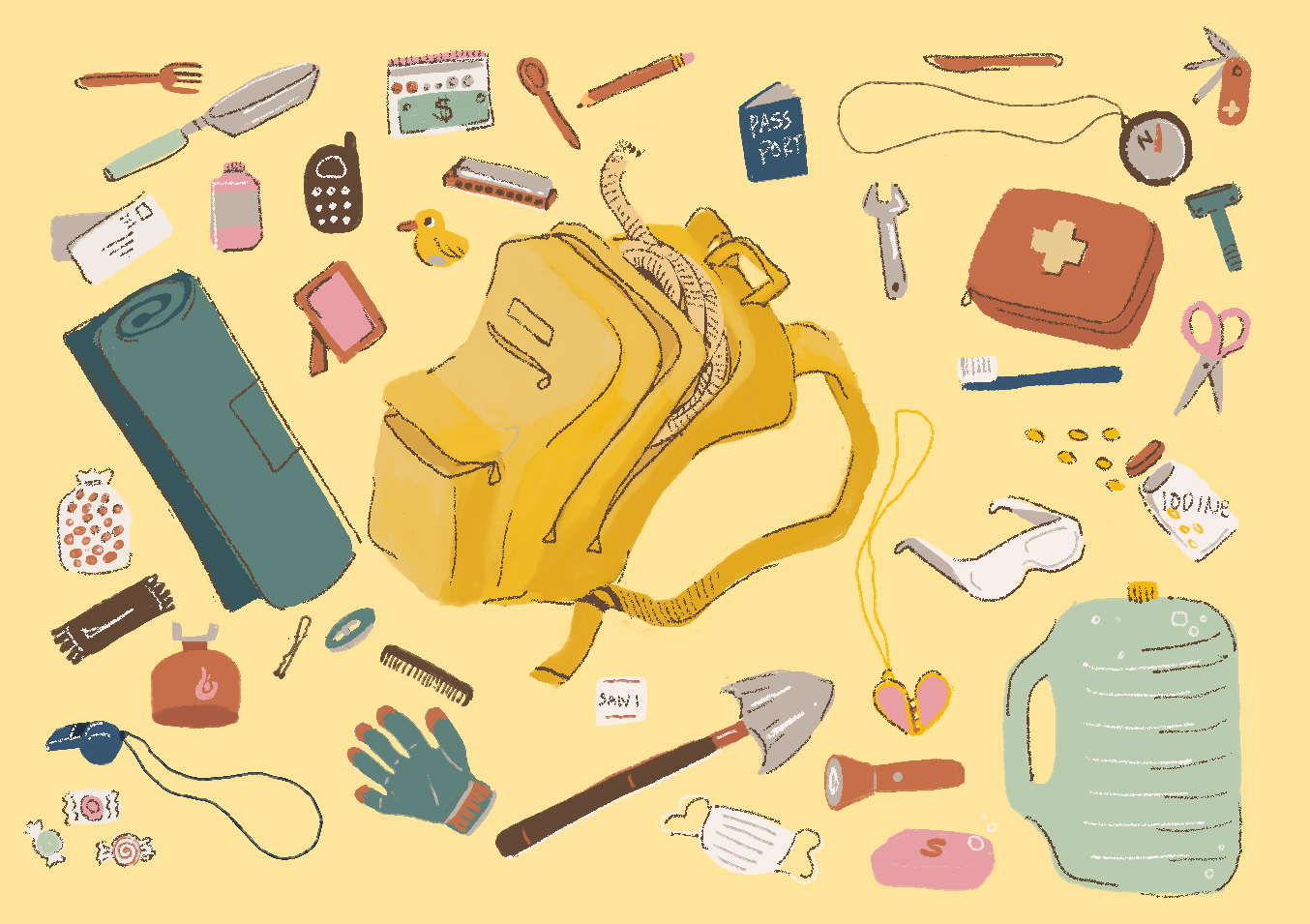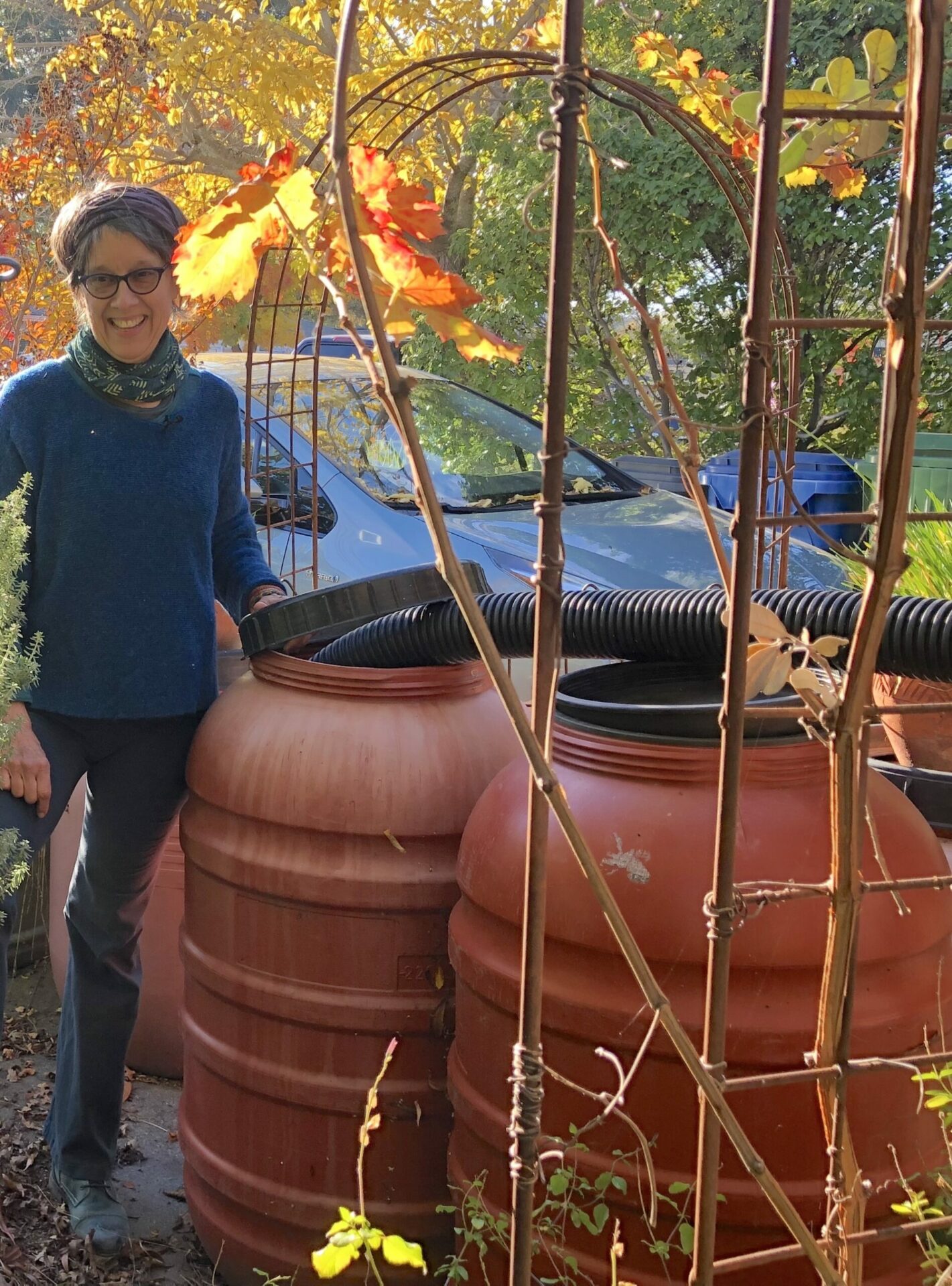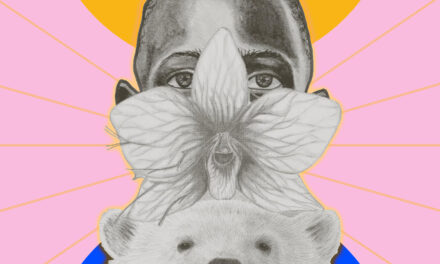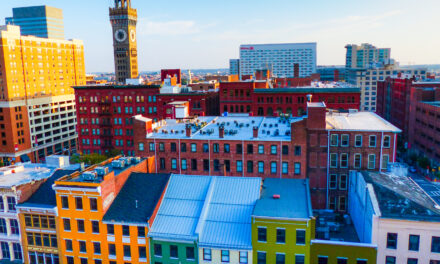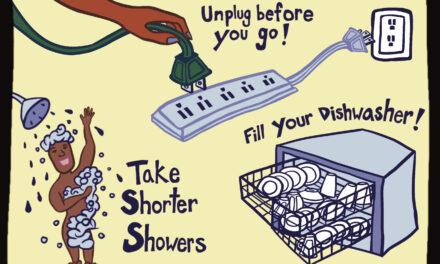Good Neighbors Make Good Disaster Plans
“The biggest determinant of somebody’s outcome after a disaster is their network.”
For millions of Californians, disaster preparedness has long meant one thing: earthquakes. And a standard earthquake kit remains essential today: food and water, flashlights, radios, spare clothing, and the rest. Lately we’ve learned to include N95 masks, a solar charger — whatever we’d need to survive for a few days if The Big One were to strike.
But there’s another, slower-moving disaster afflicting the state, disrupting our lives in ways we may have never foreseen: climate change. Fires in the wildland-urban interface, mudslides in the suburbs, smoke days at school and work, supply-chain disruptions, parades of atmospheric rivers, wildly fluctuating snowpacks, public-safety power shutoffs — they’ve all entered our lives since the mid-2010s. Southern California even saw a hurricane.
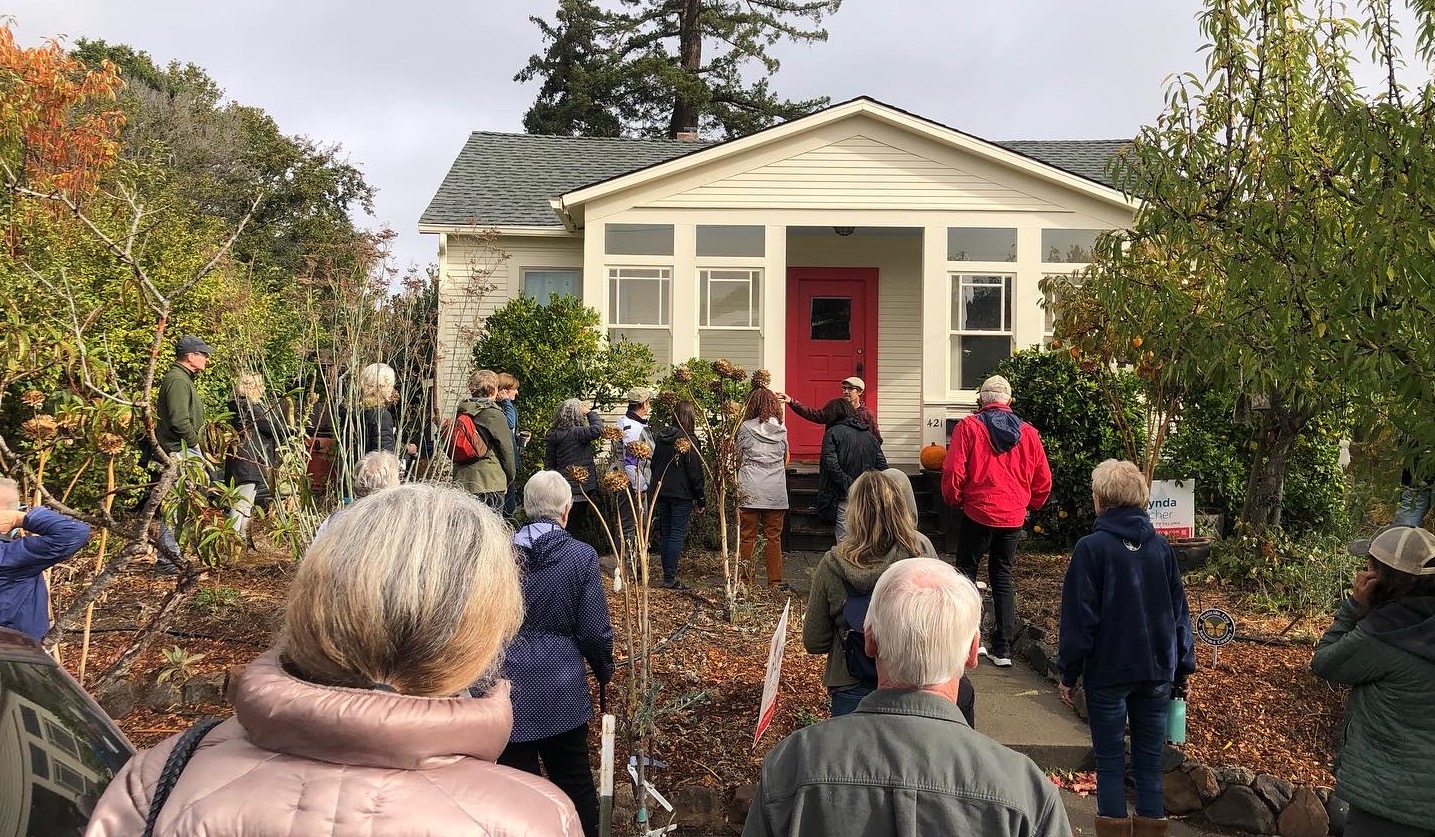
Petaluma residents interested in increasing their local resilience tour a water-wise garden. Photo: Natasha Juliana.
Given all the disruptions we now must prepare for, the traditional, earthquake-inspired approach of hunkering down and going it alone can feel both isolating and insufficient. Fortunately, there’s another way. Disaster planners in the state now recommended a set of proactive approaches that not only build resilience to climate change but also could help slow its progression, all while encouraging communal action for greater impact and preparedness.
Resilience and sustainability in one
Many of the same steps we can take at the household level to bolster our disaster readiness in an era of climate change and extreme weather can also help reduce energy consumption and dependence on distant providers, says Michael Germeraad, a San Francisco-based resilience planner with the Association of Bay Area Governments and Metropolitan Transportation Commission.
These include using rain catchment systems to reduce water use and boost emergency stores; planting backyard gardens and sharing or swapping surplus; adding trees for shade (and food); improving passive heating and cooling of our homes; and pairing rooftop solar with backup batteries.
Germeraad explored this concept in a 2018 paper and presentation at the 11th National Conference on Earthquake Engineering. “Communities across the globe are increasingly adopting goals to reduce greenhouse gas emissions and water consumption [and] address disaster safety,” he wrote. “The principles of resilience and sustainability, while unique in their scope and goals, share similar strategies that … produce symbiotic relationships.”
Petaluma’s Lisamarie Eldredge with new rain barrels. Photo: Natasha Juliana.
Cool Block
This overlapping area between climate adaptation and mitigation is at the heart of an innovative new statewide program in California called Cool Block that adds a third ingredient to the recipe: community. Instead of encouraging residents to fend for themselves against an increasingly diverse yet steady barrage of climate-driven disasters and disruptions, the program brings neighbors together, block-by-block, to explore solutions like those above, and many more.
Cool Block launched in early 2022 in three California cities — Los Angeles, Irvine, and the Sonoma County city of Petaluma — and has since expanded to others including San Francisco, Palo Alto, and Mountain View. The Petaluma program later spun off into an independent effort called Cool Petaluma. Local businessman, activist, and longtime community organizer John Crowley is one of its three co-founders.
“There are some ‘preppers’ that are extreme, where they go out and buy AK-47s,” Crowley says. “My philosophy is, it’s much better to get to know your neighbors and plant potatoes together.”
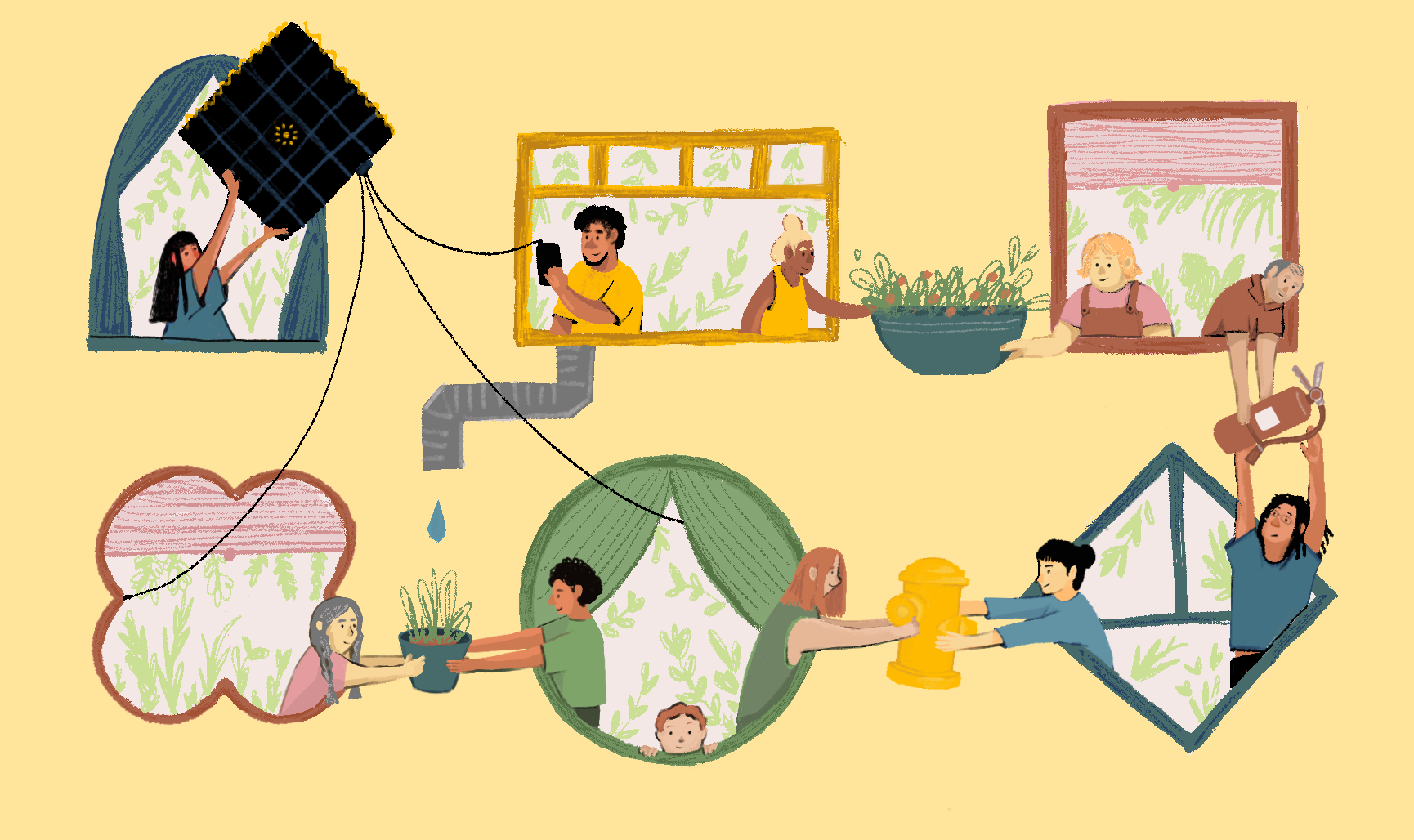
Art: Sachi Mulkey.
To date, the Petaluma program has trained more than 200 block leaders across the city of 60,000. The vast majority have gone on to actively organize with their neighbors around disaster preparedness and climate mitigation, typically in small, intimate groups of 5 to 10 people. The six-month program inspires neighbors to get to know one another better — and to learn who has what needs and who has what to offer.
“Maybe I’ve got an emergency generator, or my neighbor does,” Crowley says. “Who [on the block] understands first aid and CPR? That kind of information is hugely necessary in terms of emergencies, whether you’re a renter or a homeowner.”
Indeed, it’s this relationship-building and resource-pooling that seems to make the biggest impact on many participants. Julio Rodriguez led a group of neighbors on his East Petaluma block through the Cool Petaluma curriculum from late 2022 through mid-2023. It moved a few of them to beef up their emergency supplies, especially food and water, Rodriguez says.
“But maybe the more valuable thing is that we became pretty good friends,” he says. “We know each other’s situations now, and we know each other’s families. So if a disaster were to happen, the first thing to come to mind would be the people we met in the program.”
More than the warm and fuzzies
All this adds up to a whole lot more preparedness than could ever fit in an earthquake kit, experts say.
“There’s a lot of work in the resilience space that says the biggest determinant of somebody’s outcome after a disaster is the network that they have, and whether they have people that they can call on,” says Germeraad. “After a major event, those relationships can be relied on.”
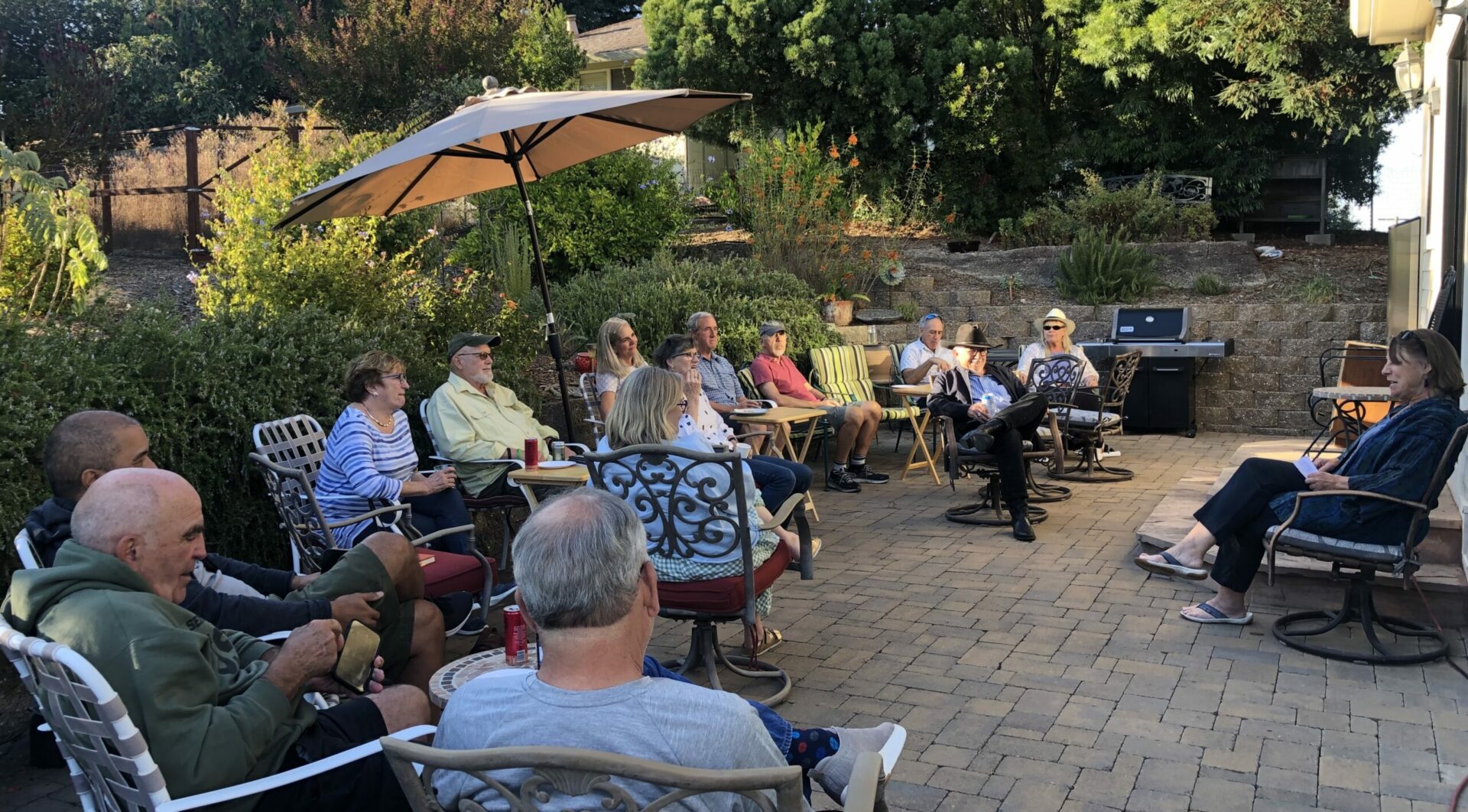
Cool Block meeting about how to improve climate resilience in Petaluma. Photo: Natasha Juliana.
Robyn Fenning, division chief of the California Office of Emergency Services’ Hazard Mitigation Planning Division, agrees that neighborly relations and community resilience are growing increasingly valuable in the face of ongoing climate-driven disruptions and disasters.
“I think COVID was an example of that, where maybe for the first time, people were starting to know their neighbors because they were forced to be at home,” Fenning says. “With other types of disasters, whether that’s extreme heat, or … the cascading impacts of a long-term power outage … I hope that folks continue to build on the connections they’ve started to make.”
Crowley refers to this as “social capital,” saying the concept is integral to Cool Petaluma’s work around disaster preparedness and climate mitigation. The challenges are too great for any of us to face alone, he says. Communities can prepare for disruptions together; they can build new, more sustainable systems; and they can respond together when disasters do hit.
“When you know your neighbor,” he says, “your chances of survival just go up.”
MTC-ABAG is a funder of KneeDeep Times through the Bay Area Regional Collaborative.






